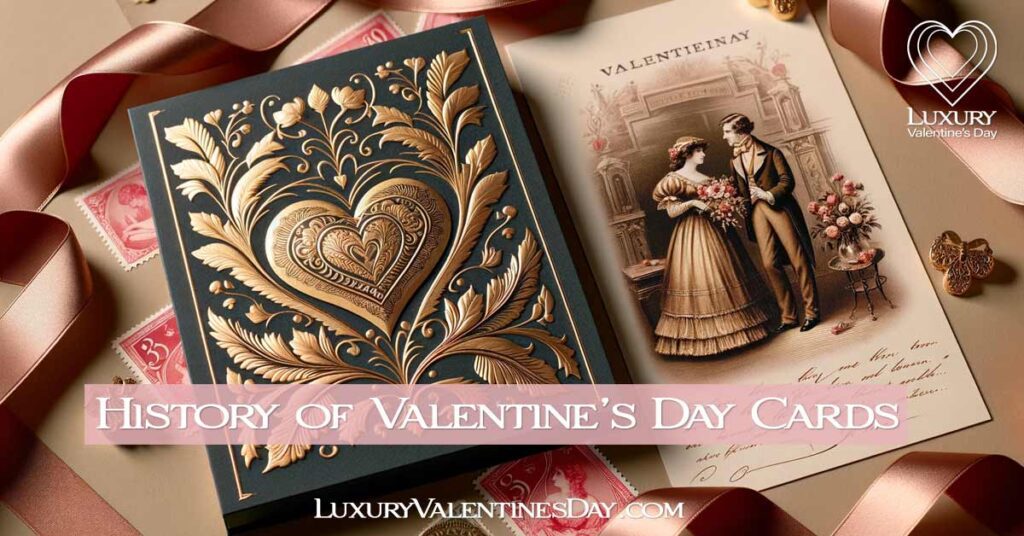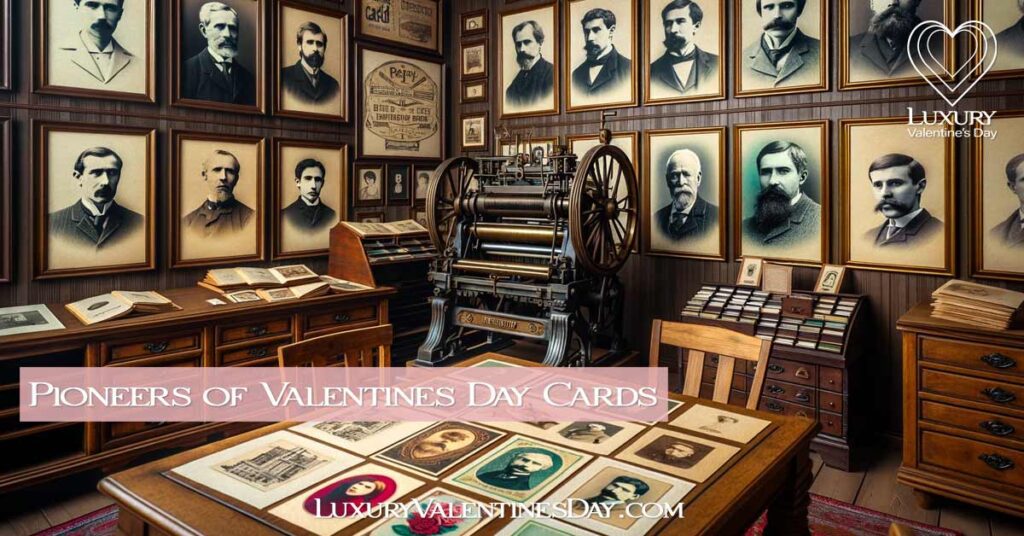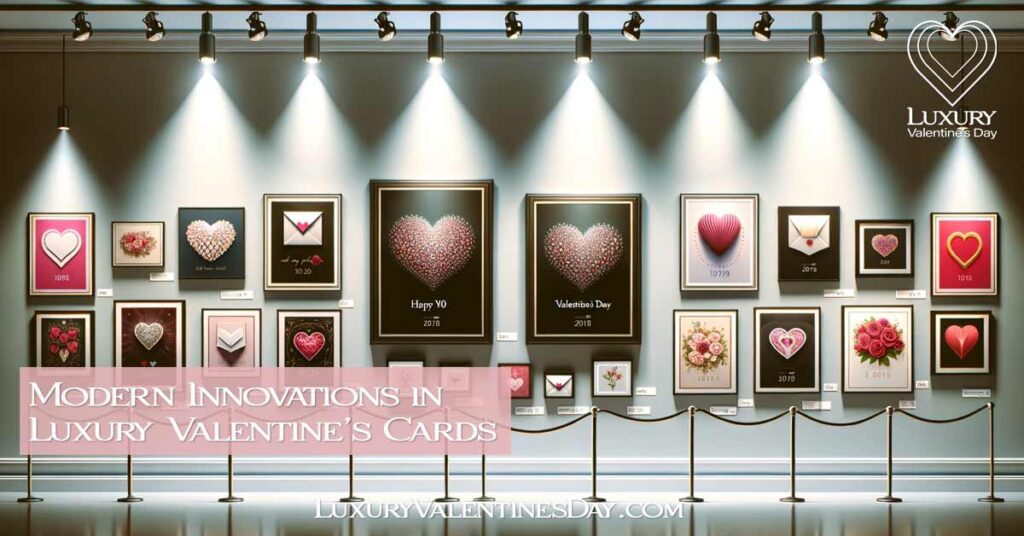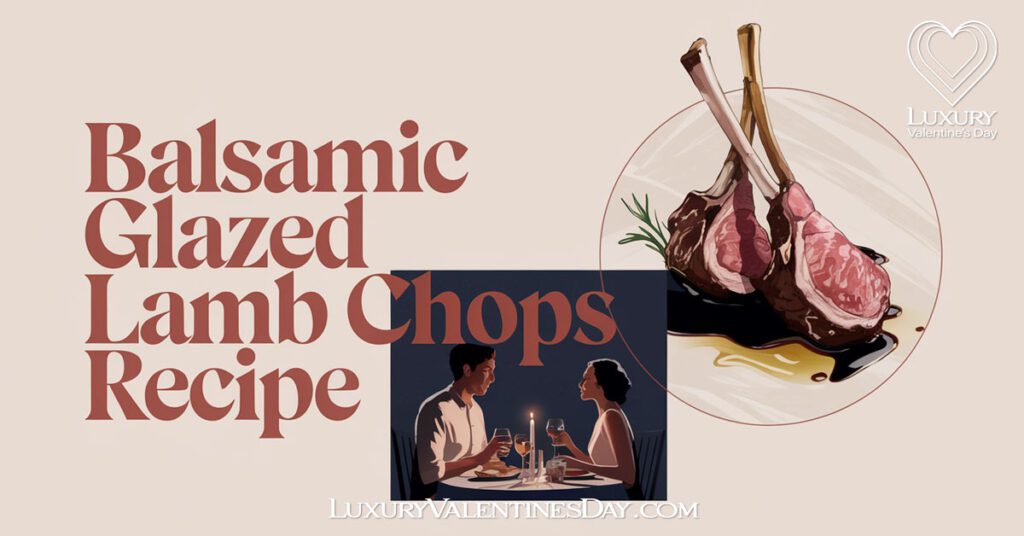
Did you know the oldest Valentine’s Day card dates back to the 15th century? Dive into the luxurious history of these sentimental keepsakes.
Valentine’s Day, the annual celebration of love and affection, has long been associated with a tradition of exchanging heartfelt greetings and tokens of affection. While today, we might think of chocolates, flowers, and candlelit dinners, one of the most enduring and cherished symbols of this romantic holiday is the Valentine’s Day card. In this article, we delve into the intriguing journey of how these simple expressions of love have evolved into exquisite works of art and luxury, perfectly aligning with the opulent theme of a luxury Valentine’s Day.
Table of Contents
ToggleThe Artful Evolution: How Love and Expression Transformed Over Centuries

The history of Valentine’s Day cards is a fascinating tale of love, artistry, innovation, and commercialization. It not only mirrors the changing dynamics of romance and expression over the centuries but also provides insight into the deep-seated human desire to connect with loved ones on this special day.
The Genesis of Romance: Handcrafted Tokens of Early Love
As we explore the evolution of Valentine’s Day cards, we’ll travel back in time to discover their humble beginnings, crafted with care and creativity. We’ll follow their transition from intimate handcrafted tokens to commercial offerings that captured the hearts of countless people. The journey will take us through the artistry and innovation that turned these cards into miniature masterpieces, worthy of the most discerning recipients.
From Quill to Press: The Technological Revolution in Love Notes
We’ll delve into the influence of technology, which brought about mass production and made these tokens of affection accessible to a wider audience. We’ll also explore the personalization and customization trends that have shaped modern Valentine’s Day cards, allowing lovers to express their emotions with unmatched uniqueness.
With this exploration of the evolution of Valentine’s Day cards, we embark on a journey that transcends time and space, celebrating love in its many forms and the enduring appeal of expressing that love through a beautifully crafted card.
Unveiling the Roots: The Historical Tapestry of Valentine’s Day Cards

To truly appreciate the evolution of Valentine’s Day cards, it’s imperative to journey back to historical Valentines and their origins, where the seeds of this cherished tradition were first sown. The tale of Valentine’s Day cards is a story interwoven with love, creativity, and deep-rooted traditions.
Love in Antiquity: The Roman Foundations of Valentine’s Cards
The earliest origins of Valentine’s Day cards can be traced back to ancient Roman festivals, most notably Lupercalia, celebrated in mid-February. During this time, young Romans would draw names from an urn to find their romantic partner for the duration of the festival. These pairings were the initial expressions of affection that would later become written messages of love. However, it was certainly not hearts and roses! You can learn the truth about Valentine’s day here!
Chivalry and Parchment: The Medieval Dawn of Written Romance
The transition from verbal expressions of love to written ones gained momentum during the Middle Ages. It was a time when courtly love flourished, and poets and troubadours composed heartfelt verses and love letters. The exchange of such notes became customary among nobility, laying the groundwork for Valentine’s Day cards.
Saint Valentine
The tradition of sending love notes on February 14th often leads people to ask, ‘Who was St. Valentine?’ He was a Christian martyr who lived in the Roman Empire. Legend has it that Saint Valentine sent a heartfelt letter to his jailer’s daughter, whom he had befriended during his imprisonment. The note was signed ‘From Your Valentine,’ a phrase that endures to this day.
The Oldest Valentine’s Day Cards
The oldest known Valentine’s Day card still in existence dates back to the 15th century. This card, beautifully preserved in the British Library, is a testament to the enduring nature of this tradition. Handwritten and decorated with intricate patterns and gold leaf, it’s a glimpse into the artistry of early Valentine’s Day cards.
Valentine’s Day in Print
The true transformation of Valentine’s Day cards came with the advent of the printing press in the 15th century. This technological leap made it possible to produce cards in larger quantities. By the 17th century, Valentine’s Day cards were becoming popular in England.
Machines and Romance: How the Industrial Revolution Mass-Produced Love
The Industrial Revolution, which began in the late 18th century, had a profound influence on many aspects of life, including how Valentine’s Day cards were produced. It allowed for more efficient and cost-effective printing methods, making it possible to create cards on a larger scale. As a result, the production of cards became more accessible to a broader audience.
As the 19th century progressed, Valentine’s Day cards began to be produced in greater numbers, featuring sentimental verses and elaborate designs. The advent of the penny post in 1840 in Britain and similar postal reforms in the United States made it easier and more affordable to send cards, further spurring the commercialization of the tradition.
The Victorian era, known for its sentimentality and romance, witnessed the mass production of intricate, lacy, and beautifully decorated Valentine’s Day cards. These cards were adorned with delicate materials like lace, ribbon, and even hair, showcasing the artistry and innovation of the time.
Visionaries of Sentiment: The Pioneers Who Crafted an Industry

The history of greeting cards is a tapestry woven with the creativity, innovation, and artistry of early card publishers. The following pioneers of the greeting card industry laid the foundation for a tradition that continues to thrive today.
Eugene Rimmel
Eugene Rimmel was a notable early card publisher who made a significant impact on the world of greeting cards. Born in France in the early 19th century, Rimmel later moved to London and became a well-known perfumer and cosmetics manufacturer. He is best remembered for creating the first commercially produced Christmas card in 1843, which featured a festive scene and became a precursor to the modern greeting card. Rimmel’s innovative approach to card design and mass production played a pivotal role in shaping the greeting card industry and its tradition of sending cards on various occasions.
Raphael Tuck
Raphael Tuck, a prominent publisher during the Victorian era, is celebrated for his contributions to the art of greeting cards. Founded in London in the 1860s, the Raphael Tuck & Sons Company specialized in the production of postcards and greeting cards. Their cards were renowned for their elaborate designs, including intricate embossing and beautiful illustrations. Tuck’s cards were often sentimental and charming, reflecting the sentimental themes of the Victorian era. The company’s success and artistic contributions significantly influenced the development of the greeting card industry during the late 19th and early 20th centuries.
Ernest Nister
Ernest Nister, a German-born publisher and lithographer, made a lasting mark on the world of children’s books and greeting cards. Nister was renowned for his exquisite illustrations, intricate mechanical elements, and pop-up designs. His publishing company, Ernest Nister Ltd., was based in London and gained international recognition for producing high-quality, innovative greeting cards and children’s books. Nister’s cards often featured charming and whimsical designs, making them highly sought after by collectors and cherished by recipients. His creative contributions helped shape the greeting card industry and made him a prominent figure in the realm of artistic card design.
Esther Howland
Esther Howland, an American artist and businesswoman, played a pivotal role in the history of Valentine’s Day cards. In the mid-19th century, she started a successful business in Worcester, Massachusetts, creating and selling elaborate handmade Valentine’s Day cards. Howland’s cards were noted for their intricate lacework and romantic motifs, and she is often referred to as the “Mother of the American Valentine.” Her innovative approach to card design and marketing techniques significantly contributed to the commercialization and popularity of Valentine’s Day cards in the United States.
Hallmark
Hallmark, founded by Joyce C. Hall in 1910, is one of the most recognized and influential greeting card companies in the world. It started as a small postcard business in Kansas City, Missouri, and rapidly expanded to become a global giant in the greeting card industry. Hallmark is celebrated for its diverse range of cards, covering various occasions and sentiments. The company’s commitment to quality, innovation, and creativity has made it a household name for greeting cards. Hallmark has played an integral role in shaping the modern greeting card industry, setting standards for design, sentiment, and personalization, and helping people express their emotions and celebrate life’s moments for over a century.
Did Hallmark invent Valentine’s Day?
No. Valentine’s Day has its roots in Ancient Rome, and Valentine’s Day cards existed well before Hallmark was even founded.
The Age of Elegance: Modern Innovations in Luxury Valentine’s Cards

The 20th century brought further technological advancements and modernization to Valentine’s Day cards, with innovations like pop-up cards and increasingly diverse designs. The trend of personalization, with custom illustrations and calligraphy, emerged as a means of making cards even more special.
Modern Trends in Luxury Valentine’s Day Cards
In the contemporary era, luxury Valentine’s Day cards have evolved to cater to the discerning tastes of those seeking not only to express their affection but also to make a bold statement of opulence and sophistication. Here, we delve into the modern trends that define luxury Valentine’s Day cards, reflecting the current desires and aspirations of the elite.
Materials of Unsurpassed Quality
Luxury Valentine’s Day cards today often feature materials of unparalleled quality. High-end paper, such as fine art paper or handmade paper, is frequently used to create a tactile and luxurious experience. Some cards even incorporate exotic materials like silk, velvet, and precious metals to add a touch of extravagance.
Handcrafted and Bespoke
Handcrafted and bespoke cards are at the forefront of modern luxury card design. Artisans and skilled craftspeople are employed to create one-of-a-kind cards that are customized to the sender’s specifications. Hand-painted illustrations, hand-lettering, and custom designs are used to make each card a work of art.
Limited Editions and Exclusivity
Many luxury Valentine’s Day card designers release limited editions, ensuring exclusivity and rarity. These cards often come with a certificate of authenticity, adding to their value and desirability among collectors.
Innovative Card Structures
Innovation continues to play a significant role in luxury card design. Some cards incorporate intricate mechanisms, pop-up features, or even interactive elements. These creative card structures offer a unique and memorable gifting experience.
Digital and Augmented Reality Cards
In the digital age, luxury Valentine’s Day cards are not confined to the physical realm. Digital cards with augmented reality features have emerged, allowing senders to create immersive and interactive experiences. These cards may include 3D animations, videos, or personalized messages.
Personalization Beyond Compare
Personalization is taken to new heights in luxury cards. Custom illustrations, monograms, or even embedding personal photographs are common features. Some designers offer the option to choose specific materials, colors, and design elements, ensuring that each card is a reflection of the sender’s unique style.
Eco-Friendly Luxury
In an era of increasing environmental consciousness, luxury card designers are turning to eco-friendly materials and production methods. These cards may feature sustainable paper, recyclable packaging, and a commitment to minimizing the ecological footprint.
Signature Scented Cards
Luxury cards are designed to appeal to all the senses, including scent. Some cards are infused with signature fragrances, such as rose or lavender, enhancing the romantic and sensory experience of receiving a card.
Exclusive Packaging
The packaging of luxury Valentine’s Day cards is an integral part of the overall experience. Many cards are presented in custom-made, beautifully designed boxes or cases, adding an extra layer of sophistication and protection.
Collaborations and Artisan Partnerships
Luxury card designers often collaborate with renowned artists, calligraphers, or brands to create limited-edition collections. These collaborations bring a fusion of talent and innovation to the card designs.
A Timeless Tradition
The evolution of Valentine’s Day cards is a testament to the enduring nature of this tradition. From its humble beginnings in handwritten notes to the opulent luxury cards of today, the essence of expressing love through beautifully crafted cards remains as strong as ever. As we embrace the rich history and modern trends, we discover that the tradition of exchanging Valentine’s Day cards is not only a celebration of love but also an art form that continues to flourish, offering a canvas for creativity and a vessel for heartfelt sentiments.
Related Posts
- Delicious Creamy Tuscan Garlic Chicken Recipe
- Cookies Decorated with Sugar Sprinkles and Pearls: Simple Tips for Beautiful Results
- Date Ideas That Start with A: Amazing Adventures Await
- Ombre Decorated Cookies: Tips for Stunning Gradient Designs
- First Date Tips: Master the Art of Memorable Encounters
- 101 Eco-Friendly Date Ideas for a Sustainable Valentine’s Day














